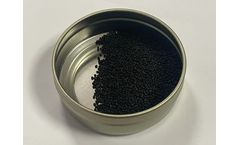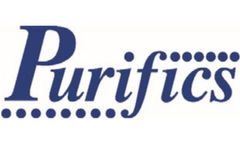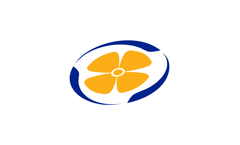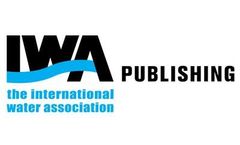Free Chlorine Monitoring Articles & Analysis
-
Beyond Granular, Powdered & Extruded: Discover SPHERICAL Coconut Shell Activated Carbon!
Did you know coconut shell activated carbon comes in 4 specialized forms to match industrial needs? Let’s decode their superpowers: Granular (GAC):Bestfor: Fixed-bed water filters & gas purificationWhy it wins: High durability, easy regeneration Powdered (PAC):Best for: Rapid contaminant removal in liquid-phase systemsWhy it wins: Ultra-fast adsorption rate Extruded (EAC):Best for: High-flow ...
-
Types and applications of residual chlorine sensors for water quality
Background:Residual chlorine sensor is an essential tool in water treatment. They are used to measure the concentration of free chlorine that remains in water after being treated with chlorine. Residual chlorine level is an important parameter to determine the effect of water treatment and ensure the safety of drinking water supply.Chlorine is added to water as a disinfectant to kill harmful ...
-
Pre-Engineered Solutions for Low-Flow Municipal Installations - Case Study
BACKGROUND Ultraviolet (UV) technology has been used in the treatment of municipal wastewater for decades to ensure that discharge to local lakes and rivers is compliant with discharge permits, and local regulations. UV acts by inactivating microorganisms and reduces the various coliform, E. coli, or heterogenous plate counts used to evaluate discharge. Chemical-based technologies such as free ...
-
Project - Horizon 2020: Urbantech
Value chain innovations in emerging Health Tech, Smart City and Greentech industries addressing the challenges of smart urban environment. Today’s urban systems need to adapt to a growing population in order to sustain and provide a healthy, smart and green environment. Smart technologies, solutions and innovations are needed. The EU-funded URBAN TECH project will support the acceleration ...
-
Top 6 water quality sensors
What is a water quality sensor? Water quality sensors measure water parameters such as conductivity, dissolved oxygen, pH, COD, residual chlorine, turbidity and so on through a variety of methods such as chemical, physical and biological reactions of water, providing data support for researchers, observers and engineers. It is used in laboratory research, environmental management improvement, ...
-
Top 6 water quality sensors
What is a water quality sensor? Water quality sensors measure water parameters such as conductivity, dissolved oxygen, pH, COD, residual chlorine, turbidity and so on through a variety of methods such as chemical, physical and biological reactions of water, providing data support for researchers, observers and engineers. It is used in laboratory research, environmental management improvement, ...
-
Subsurface Drip Dispersal Of Effluent On Steep Slopes
The treatment and disposal of sewage has evolved considerably since the early 1900’s. As populations grew the methods of disposing treated sewage were frequently redesigned. Engineers had to evaluate and adjust to local conditions, climate, rolling steep terrain and the availability of funds. Municipalities built in the earlier part of the 20th century were designed according to a ...
-
Improving alfalfa irrigation in The west
Alfalfa grown for forage is a major crop in many areas of the western United States. In the arid and semi–arid west, irrigation is required to obtain economic alfalfa yields. Because alfalfa is a perennial crop with a potentially long growing season, it can use a substantial amount of water. Alfalfa production in Imperial County, CA, has been valued at more than $170 million dollars for ...
-
THM Prevention & DOC Remova Drinking Water - Case Study
Cuf was sole sourced for a drinking water facility as it had unmatched purification performance and was the only viable solution for the trend of stricter regulations for reductions in color, THMs, and liquid waste. Cuf achieves all of these water purification requirements and provides an essentially Zero Liquid Discharge solution. A 1 MGD well has been brought online to reduce the demand on its ...
-
Cleaning Reservoir Data to Understand Water Age
Cleaned historical reservoir data tells a story about water age, which impacts on water quality. Excessive water ageing is likely to lead to a reduction in residual chlorine concentration, and potentially poor disinfection for communities. Reservoirs can experience considerable differences in winter and summer water age especially where there is high summer tourism. Cleaning and organising ...
-
GS Series Tank Mixing, Short-Circuiting, Stratification, Chlorine Residuals, Ice Mitigation (ID195) - Case Study
Topics: Potable, ice buildup, stratification/water age, short-circuiting, chlorine Overview: This tank is an elevated single pedestal, welded steel pedisphere. The height of this tank is 110 ft. and diameter is 30 ft. This tank has a capacity of 100,000 gallons. This system meets the potable needs of this community of approximately 789 residents. The water comes from two groundwater wells, each ...
-
Hollywood Casino Columbus, Ohio, U.S.A - Case Study
A $400 million redevelopment project that will be the site for a new gaming casino was formerly an automotive factory. The primary contaminants of concern on this 123 acre brownfield site Primary concern were residual chlorinated compounds from former cleaning and manufacturing ...
By CETCO
-
Pasco County uses total life cycle costing to select chloramination analyzers - Case Study
Pasco County, Florida Water Utilities serves its customers with water from its 58 permitted wells blended with the water supplied by its large regional supplier, Tampa Bay Water. In 2002 Tampa Bay Water converted to monochloramine disinfection because of its advantages over free residual chlorine. Monochloramine is more stable and better extends the disinfectant residual throughout the ...
-
Curren hits the bull`s eye using online process analyzers - Case Study
The Howard F. Curren Advanced Wastewater Treatment Plant is one of the largest nitrification/denitrification filter plants in the world with a design capacity of 96 million gallons per day average daily flow. It serves about 110,000 accounts in the City of Tampa and portions of Hillsborough County, Fla. Over the years, the quality of its treated effluent has been frequently cited as the primary ...
-
St. Bernard Parish uses Singer Valve’s taps to meet compliance with water safety standards - Case Study
Their Challenge To improve the water quality of St. Bernard Parish and to meet compliance with water quality standards. Our Solution Singer Valve’s Total Automatic Purging System The Result On track with water quality standards and regulation Improved chlorine residuals, lower total Trihelomethane and Haloactic acid values Reduced consumer complaints ...
-
Mixing a 2MG Hydropillar potable tank - Case study
Solving disinfectant residual problems and adding boosting capability. Topics: SolarBee® SB Series, solar-powered, chloramine, disinfectant boosting System Overview: Serves -38,000 City residents. Disinfectant Type: Chloramine Tank Build Information: Tank Volume (gallons): 2,000,000 Tank Type: Hydropillar, welded steel Total Tower Height (ft): 149 Tank Dimensions (ft): 54H X 98D ...
-
Active Mixing in a 4MG Pre-Cast Concrete GST - Case study
Eliminate Stratification and improve overall water quality. Topics: tank mixing, chloramine, nitrification, stratification, taste, odor, inconsistent disinfectant residuals Contact Information Further information may be available upon request. Please contact Medora Corporation via phone at 866-437-8076 or by e-mail, info@medoraco.com System Overview: This municipality purchases 1.5 MGD from ...
-
Free and residual chlorine according to DIN EN ISO 7393-1
Metrohm is pleased to present an Application Bulletin describing the determination of free and total chlorine by iodometric titration. To disinfect water for human consumption, chlorine is added to the water in some countries. Because chlorine is highly toxic, organism like bacteria are killed and the onset of waterborne diseases like cholera is prevented. But chlorine is not only toxic to ...
By Metrohm AG
-
Forming DMAs in a water distribution network considering the operating pressure and the chlorine residual concentration as the design parameters
Dividing a water distribution network (WDN) in the optimal district metered areas (DMAs) formation is one task that usually troubles water utility managers. The present paper utilizes optimization methods to achieve desired segmentation conditions in terms of (a) operating pressure reduction, thus reducing the system's real water losses and (b) residual chlorine concentration reduction thus ...
-
Reservoir & South tower - Case study
Topics: potable, stratification/water age, chloramine, short-circuiting, ice buildup, nitrification Overview: The Reservoir is a 2 MG underground storage reservoir (122' x 182' x 13.5' high) that typically holds about 1.5 MG at about 8' deep. Together with a 1 MG plant reservoir they serve the potable needs of about 8,000 residents. The combined reservoir systems service two 0.5 MG elevated ...
Need help finding the right suppliers? Try XPRT Sourcing. Let the XPRTs do the work for you






